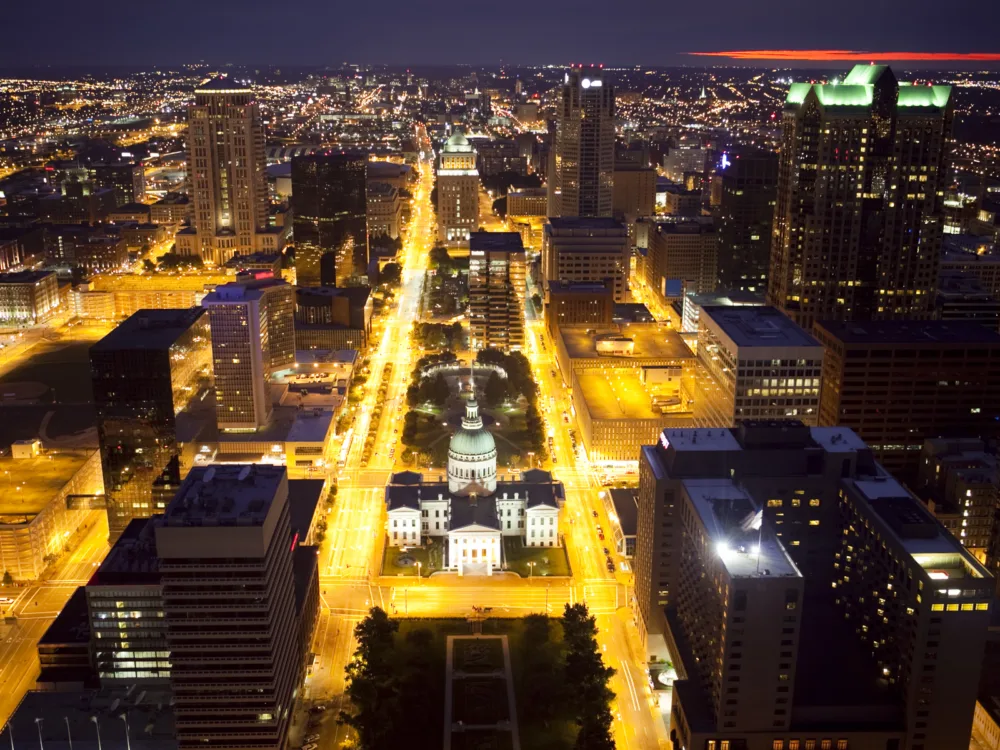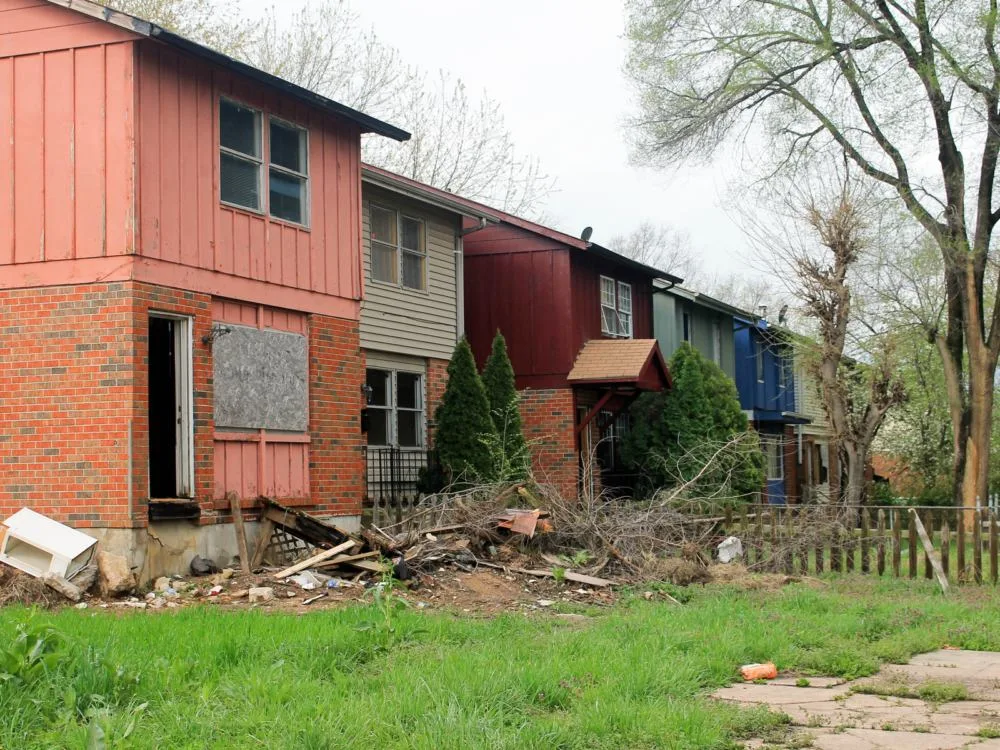Is St. Louis safe to visit?
Yes, St. Louis is safe to visit, with most crime concentrated outside of tourist areas and often overstated due to statistical methods focusing only on the city proper. Visitors should exercise caution, especially regarding property crimes and in certain neighborhoods, but as long as they take basic precautions and avoid known unsafe areas, they can enjoy a safe trip to St. Louis.
St. Louis is a surprisingly popular destination for travelers, mostly domestic travelers from other parts of the United States, along with some international travelers. Every year, about 25 million visitors arrive in St. Louis.
The Mississippi River, which bisects the city, is definitely the biggest tourist attraction, along with the majestic Gateway Arch.
St. Louis has lots of important history because it was the starting point for many important expeditions to the West, which you can learn about here. Of course, many people skip the history lesson altogether and go straight to chowing down on some barbecue.
But while there’s plenty to see and do in this storied city, is St. Louis safe to visit? Here’s our take.
Is St. Louis Safe to Visit in 2024?

f11photo/Shutterstock
Yes, St. Louis is safe to visit. The crime that does occur is mainly concentrated outside of tourist areas. Plus, locals point to skewed crime statistics as a reason for their city’s unsafe reputation.
Common crimes include:
- Homicide
- Assault
- Gun violence
- Break-ins
- Motor vehicle theft
- Theft
For years, St. Louis had a reputation as a dangerous city. In fact, it held the title of the U.S. murder capital for several years until New Orleans surpassed it in 2022. It’s clear that violent crime is a serious problem in St. Louis.
However, locals and authorities argue that St. Louis’s reputation is harmed by imperfect statistical data. Most people reference FBI crime data when saying that St. Louis’s crime rate is bad.
However, as the city’s official government website for visitors explains, this crime rate calculates crime only using the population for St. Louis proper, not the surrounding metropolitan area, St. Louis County.
This means the population considered when dividing the ratio is low, which, when you divide the total crime incidents, makes it seem as if there is a crime happening every minute.
It doesn’t help that many people confuse St. Louis with East St. Louis, a town which truly does have a sky-high crime rate. Although the name makes people think that East St. Louis is part of the city of St. Louis itself, it has nothing to do with the city.
They aren’t even in the same state — East St. Louis is across the river in Illinois. More importantly, don’t let your worries about St. Louis crime distract you from another important concern, one that is more likely to disrupt your trip — extreme weather.
St. Louis winters are very cold and snowy, and summers are hot and humid, so dress accordingly or try to plan your trip for shoulder seasons. Occasionally, St. Louis gets extreme weather, such as blizzards, ice storms, flooding, and even tornadoes.
Check the weather forecast before you visit. If you have the bad luck to be visiting during a disaster, follow local government alerts for any necessary measures, including evacuation.
Crime in St. Louis

CrackerClips Stock Media/Shutterstock
For most visitors to St. Louis, the primary concern is crime — and with good reason. Taken at face value, crime statistics for the city are truly alarming.
According to US News & World Report, St. Louis’s crime rate is 483.1 incidents per 100,000 people, much higher than the national average (although, keep in mind what we mentioned earlier about the misleading way that the city’s crime rate is calculated).
The rates of both property crime and violent crime are higher than the national average. Neighborhood Scout offers a more detailed breakdown of the St. Louis crime data.
The majority of crimes committed in St. Louis are property crimes, making up about 78.6% of total crimes committed in St. Louis. The most common form of property crime is theft, followed closely by motor vehicle theft.
Motor vehicle theft is increasing in St. Louis, as it is elsewhere in the country. St. Louis also has a high rate of violent crime, with 4,387 incidents in 2021. The most common violent crime is assault, which makes up about 74% of all total violent crimes.
It is followed, although not closely, by robbery. In 2021, St. Louis recorded 189 homicides and 146 incidents of rape, although rape victims don’t always report the crime, so actual numbers might be much higher.
Even when you factor in the problems with calculating St. Louis’s crime rate, it’s clear that the city struggles with frequent crime.
There are a few reasons why. One is high levels of income inequality and poverty — St. Louis has one of the highest racial wealth gaps in the entire country.
Decades of discriminatory practices such as blockbusting created neighborhoods that are highly stratified by race and wealth, pushing many people into desperation, which in turn forces people into a life of crime.
Poverty also plays a role as deindustrialization hit the city hard. Many people fled the city as factories closed and jobs dried up, turning parts of the St. Louis downtown into ghost towns. The lack of money, jobs, and government safety nets made it easy for gangs to take over parts of the city.
Additional factors, including a police force with a reputation for brutality undermining public trust in officers, poor education, a prime location at a crossroads for trafficking, and even widespread lead poisoning, all contribute.
However, things are getting better for St. Louis. People are slowly moving back to the city, drawn by the job opportunities, free cultural activities, and decent standard of living compared to the cost of living.
Parts of downtown that have been run-down for years are getting a much-needed facelift. The homicide rate has also been declining over the past few years, although St. Louis still has a long way to go.
Theft from Motor Vehicles
Theft in all forms is the most common crime tourists and residents alike are likely to encounter in St. Louis. Property crimes are higher than the national average, and you have a 1 in 18 chance of being the victim of a property crime in the city.
One of the most common crimes that affects visitors is either theft of a motor vehicle or theft from a motor vehicle. Vehicle break-ins and thefts are increasing across the country, and St. Louis is no different.
Luckily, vehicle break-ins are relatively easy to prevent. Most break-ins are caused by car owner carelessness, so much so that local police announced they were fed up with people’s bad habits creating more work for them.
The official St. Louis city website for tourists includes helpful tips for helping you avoid being the victim of a vehicle break-in or theft.
Car thefts are crimes of opportunity, so make sure that a thief doesn’t have the opportunity to target your car by locking your doors, closing all windows, and parking in a secure area, such as parking lots with security.
Make sure that you eliminate the temptation for theft by putting away any valuables or, better yet, not leaving them in the car at all. Of course, you can also avoid vehicle break-ins by not having a car in St. Louis at all.
The city has great public transportation, and the downtown area is compact and walkable. If you fly in for the weekend, there is no need to rent a car just for a few days.
Homicide
When people think about visiting St. Louis, they are probably more worried about violent crimes such as homicide than property crimes.
The headlines are certainly scary. For years, St. Louis had the dubious honor of being called the murder capital of the United States. Per capita, the city proper did have the highest murder rate in the nation.
Although the homicide rate declined in 2022, there were still 196 people killed in 2022 — that is nearly 200 deaths.
Most homicides in St. Louis involved people who were at least acquaintances, showing that incidents of violence are often targeted. It is rare that homicides are random acts of violence, so tourists are usually protected since there is nobody in the community who wants to kill them.
Incidents of homicide are often confined to certain neighborhoods, which is why it is so important to know which neighborhoods to avoid in St. Louis.
Avoiding Bad Areas

Karen Bahr/Shutterstock
Most crime in St. Louis is concentrated in a few areas, so it’s important to know which neighborhoods to steer clear of. As a general rule, the neighborhoods to the north of the city are more dangerous than those to the south.
Most people say that the boundary is Delmar Boulevard or highway 40 and that neighborhoods to the north have the majority of the city’s crime.
This region includes neighborhoods such as Old North St. Louis, Baden, Wells-Goodfellow, and Greater Ville. There are also certain neighborhoods in the southern part of St. Louis that are less safe.
These include Tower Grove South, Dutchtown, and Bevo Mill. According to some statistics, the crime statistics in Tower Grove South are about 118% higher than the national average. The downtown area also sees a lot of crime.
You should be fine during the day but be careful in the area at night when many businesses shut down and the streets become quieter.
Things to Consider
Here are some other things to keep in mind when planning your trip to St. Louis:
- St. Louis is actually on an active seismic zone, the New Madrid Seismic Zone. Although large earthquakes are infrequent, one in the 19th century did disrupt the flow of the Mississippi River.
- Make sure that you keep your valuables out of sight as you travel through the city and try to blend in with the locals. You don’t want to attract the attention of thieves who might snatch your purse or wallet.
- If you feel unsafe in downtown St. Louis, the Downtown St. Louis Community Improvement District will send an officer to walk you back to your accommodations if you contact a designated safety number.
- Trust your intuition when moving through the city, and don’t take shortcuts through unsafe areas or deserted alleyways at night.
Frequently Asked Questions

f11photo/Shutterstock
Here are some common questions that other visitors had to ask:
Is it safe to walk around St. Louis at night?
The answer depends on where you go. Some neighborhoods, especially those that are famous for their lively nightlife, are safe enough to walk around at night.
But in most places, you shouldn’t risk it. Downtown is safer during the day but becomes quieter at night and full of crime, so take a taxi instead of passing through this area.
Is St. Louis safer than Chicago?
St. Louis actually has a higher per capita crime rate than Chicago. That being said, it is easier to avoid bad neighborhoods in St. Louis than in Chicago.
Is St. Louis worth visiting?
St. Louis has a lot to offer out-of-town visitors. The Gateway Arch is the most famous landmark. St. Louis also has a lively cultural scene with many museums, such as the St. Louis Science Center, City Museum, and the St. Louis Art Museum. The great thing is that most of St. Louis’s attractions are free.
Where is it safe to go in St. Louis?
The southern side of the city is the safest area in the city, especially the southwest region. Safe neighborhoods in the city include Princeton Heights and Clifton Heights. Most tourist attractions, such as the museums and Forest Park, are also safe.
Is St. Louis safe for solo female travelers?
St. Louis is mostly safe for solo female travelers. However, it does have a slightly higher than average rate of sexual assault. Be careful not to venture into deserted areas alone at night and take other precautions.
So, Should You Travel to St. Louis in 2024?
| 📈 Homicide rate | 87.83 per 100k (very high) |
| 👮♂️ Most common crime | Petty theft |
| 🏠 Worst area | Delmar Boulevard/Hwy 40 |
| ❓ Safety tip | Stay in tourist areas |
St. Louis does have a higher-than-average crime rate, but it mostly affects locals, not visitors. As long as you take basic precautions and avoid bad areas, you should have a great time. So what are you waiting for — book your trip to St. Louis today!



